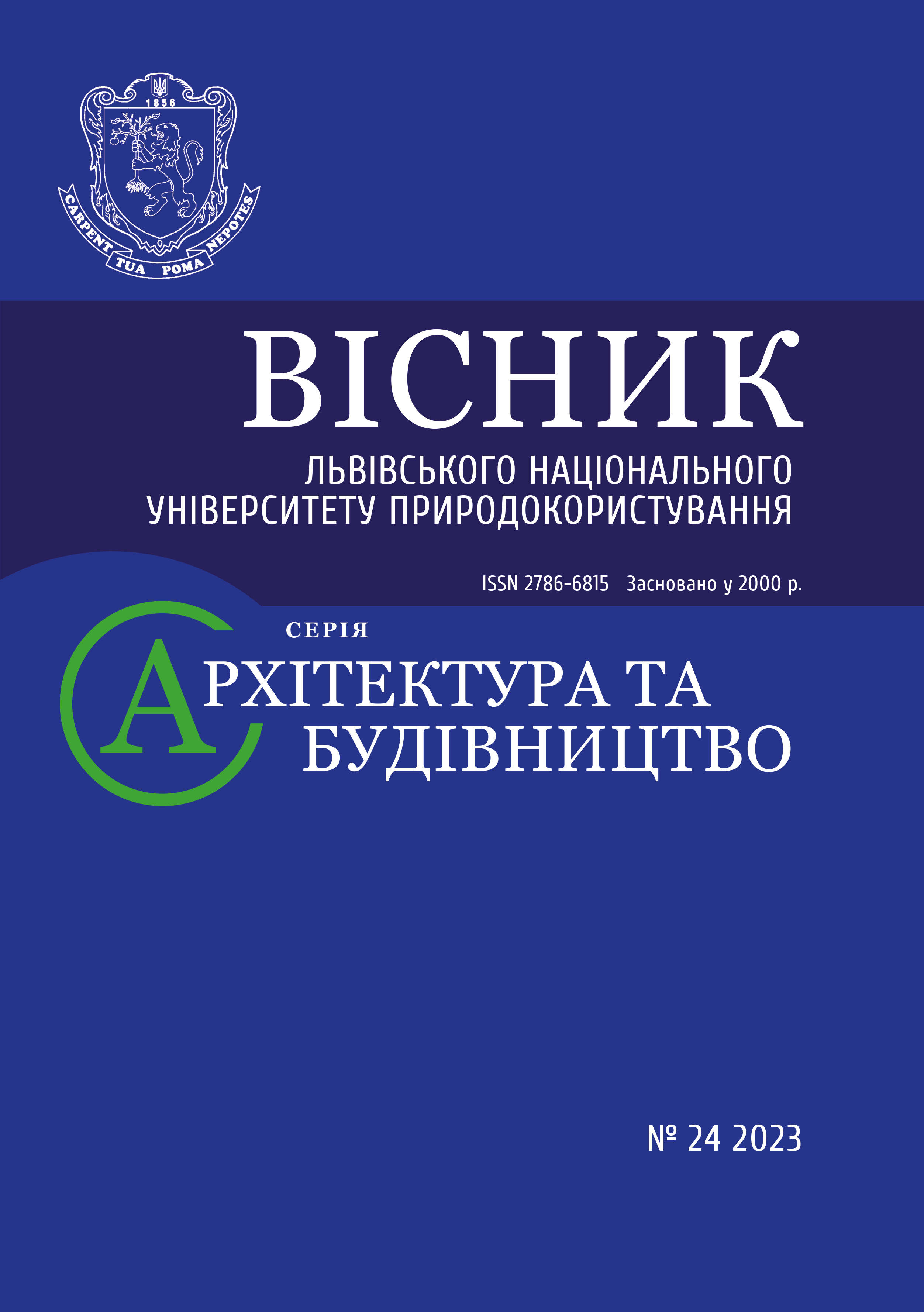THE BASIC LENGTH OF ANCHORAGE OF BAR REINFORCEMENT OF CLASS A500C IN STEEL-FIBER CONCRETE BEAMS
DOI:
https://doi.org/10.31734/architecture2023.24.045Keywords:
steel fiber, steel fiber concrete, rod reinforcement, tensile test, beam, anchoringAbstract
In combined reinforced steel-fiber concrete beams and slabs, which contain rod reinforcement and fiber, it is possible to reinforce the elements with rods only in the middle of the spans, or to wind a part of the rods behind the inner faces of the supports and break off a part of the rods at some distance from the supports. Therefore, the issue of winding the rods that are not brought to the supports, beyond the calculated cross-section to the required length, is important. This can ensure the bearing capacity of both normal and inclined sections of combined reinforced steel fiber concrete bent elements.
The criterion for the loss of the rod adhesion to steel-reinforced concrete is the displacement of its unloaded end by 0.1 mm. The pulling forces for such a shift are not maximum, but since the long-term action of the load can cause destructive processes in the area of contact of the rod with concrete, that is why the above criterion is assigned.
The task of these studies is to develop proposals for determining the basic anchoring length of rods in the stretched zone of beam steel fiber concrete elements made of concrete of classes C20/25, C25/30, C30/35, reinforced with fiber of type НЕ1050 with coefficients of fiber reinforcement by volume = 0.007; 0.0125; 0.018.
Using the regression equation used to determine the stresses at the loaded ends of the rods, obtained in our previous studies, the values of the basic length of their anchoring in steel fiber concrete are established, provided that these stresses should not be less than the calculated value of the reinforcement tensile strength.
It is shown that the basic length of anchorage, provided that depends on the strength of the matrix concrete. So, for example, for rods with a diameter of 8 mm embedded in concrete of class C30/35 with a percentage of fiber reinforcement of 0.7, is 1.58 times smaller than for concrete of class C20/25. Under the same conditions, but with a percentage of fiber reinforcement of 1.25, is 1.48 times smaller, and with a percentage of reinforcement of 1.8 – 1.36 times.
The basic anchoring length was also influenced by the coefficient of fiber reinforcement by volume. Thus, for example, under a rod diameter of 10 mm, embedded in C20/25 class concrete and a fiber reinforcement coefficient of 0.018, the basic length of anchorage is 1.42 times less than under a fiber reinforcement coefficient of 0.007.
The relative basic anchoring length does not depend on the reinforcement diameter. For a specific class of concrete and the coefficient of fiber reinforcement , it is approximately the same for each diameter. This is because the Rehm indices for the rods did not differ significantly.
References
Bilozir V. V., Mazurak R. A. Analysis of the factors affecting the adhesion of sickle-shaped reinforcement to concrete and fiber concrete. Modern technologies and calculation methods in construction. 2020. Issue 14. P. 47–54.
Bilozir V. V., Mazurak R. A. Anchoring of bar reinforcement of class A500C in steel-reinforced concrete. Bulletin of Lviv National Environmental University. Ser. «Architecture and construction». 2022. No 23. P. 19–26.
Bilozir V. V., Mazurak R. A. Coupling of bar reinforcement of class A500C with steel-reinforced concrete of beam-type samples. Modern technologies and calculation methods in construction. 2022. Vol. 18. Lutsk: LNTU, 2022. P. 22–33.
Bilozir V. V., Mazurak R. A. Mathematical model of the adhesion of rod reinforcement with steel-reinforced concrete. Resource-saving materials, constructions, buildings and structures. 2022. Issue 41. P. 103–109.
DSTU B V.2.6-156:2010. Concrete and reinforced concrete structures made of heavy concrete. Design rules: [effective since June 01, 2011]. Kyiv: Ministry of Regional Development of Ukraine, 2011. 116 p. (National Standard of Ukraine).
DSTU-Н B V.2.6-218:2016 Guidelines for the design and manufacture of structures from dispersed reinforced concrete. Kyiv: UkrNDNC, 2017. 35 p.
DSTU 3760:2006 Welded reinforcing meshes for reinforced concrete structures and products. General technical specifications. [effective since October 01, 2007]. Kyiv: Derzhspozhyvstandart Ukrainy, 2007. 28 p.
Eurocode 2. Design of reinforced concrete structures. Part 1-1. General rules and regulations for buildings (EN 1992-1-1: 2004, IDT): DSTU-NB EN1992-1-1: 2010. Introduction. effective since July 01, 2013. Kyiv: Ministry of Regional Development of Ukraine, 2011. 118 p.
Mazurak R. A. Anchoring of rod reinforcement in fiber concrete: dissertation of a doctor of philosophy in the field of technical sciences: 192. Lviv, 2023. 193 р.
TC R. RC 5 Bond test for reinforcement steel. 1. Beam test, 1982. RILEM Recommendations for the Testing and Use of Construction Materials. New York, USA: E & FN SPON, 1978. P. 213–217.
TC R. RC 6 Bond test for reinforcement steel. 2. Pull-out test, 1983. RILEM Recommendations for the Testing and Use of Construction Materials. New York, USA: E & FN SPON, 1994. P. 218–220.


